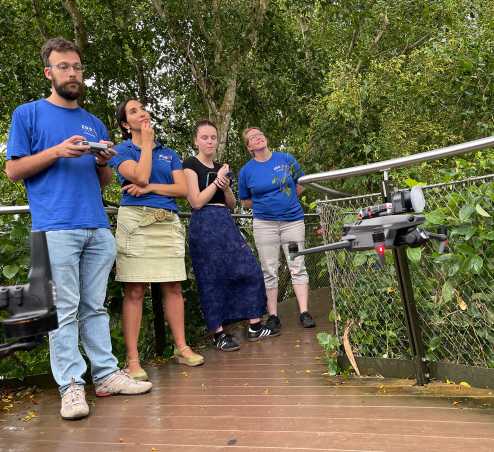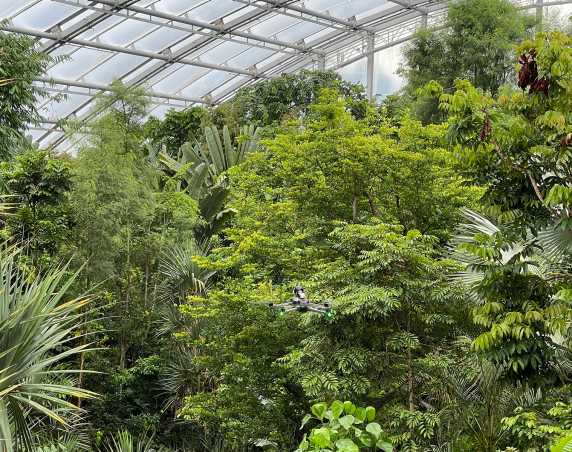The semi-final challenge
Each team had 72 hours in total to complete their testing: 24 hours to collect samples and 48 hours to analyze the findings and compile a report. The challenge was to identify as many species of plants and animals as possible across a designated plot without actually setting foot in the jungle.
Over 24 hours, the ETH BiodivX team's drone scanned the rainforest 41 times, collecting 50 samples of environmental DNA (eDNA). These are DNA traces that living beings leave behind in their habitat – through excretions or the loss of skin and hair particles, for example. By collecting eDNA, the presence of different species in a given area can be detected. Using drones, the ETH BiodivX team collected three different types of eDNA samples: water, air, and surface samples. To collect the surface samples, the researchers developed a probe that could take swabs from a wide variety of surfaces. This was attached to a drone and could be lowered deep into the rainforest by a winch. “This technique allows us to sample environmental DNA from inside the tree canopy, which would otherwise be impossible to access,” explains ETH Professor Stefano Mintchev, a member of the ETH BiodivX team.
A rover and a drone, developed by researchers from the University of Aarhus and TU-Delft, were also used during the semi-finals. During their deployment in the rainforest, these autonomous devices recorded a total of 130 gigabytes of video and audio data. Citizen scientists and AI algorithms, co-led and deployed by Zurich-based non-profit organization GainForest, monitored their activities via a live stream and identified additional species.
Overall, more than 12 million DNA sequences were produced, and the team was able to detect a total of 257 plant and animal species. The findings were then compiled in a report numbering more than 70 pages.
Zoo Zurich: the ideal practice environment
The hot and humid conditions in the rainforest pose a significant challenge for the electronics used. Moreover, sampling techniques also had to be practiced before the researchers set off for Singapore. Fortunately, the Masoala Rainforest in Zoo Zurich provided the ideal practice conditions. “Alongside our mission to educate, conserve nature and protect endangered species, one of the four core tasks of a modern zoo is research. Our collaboration with ETH Zurich is a great example of how the Masoala Rainforest can be used for testing and optimizing research methods before deployment in the field,” explains Dr Leyla Davis, Research Curator at Zoo Zurich.




